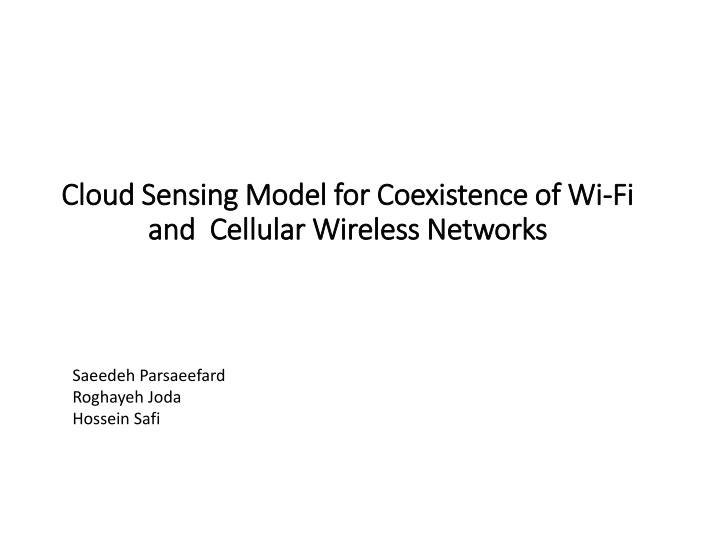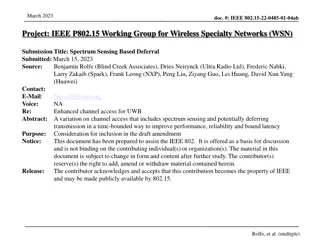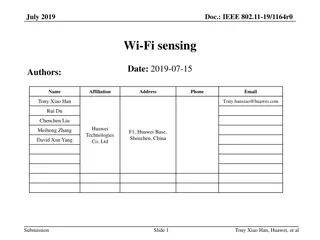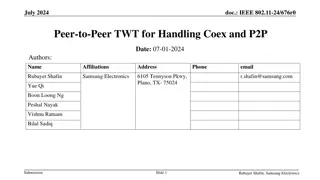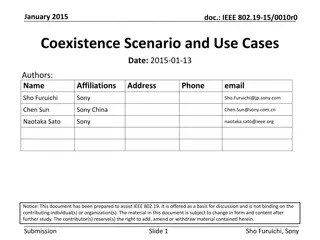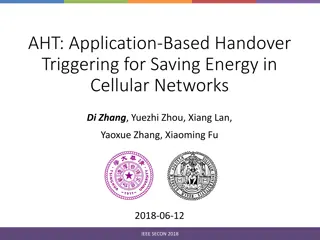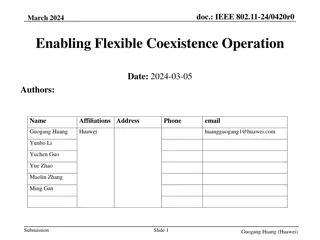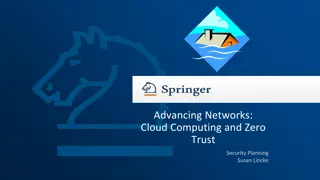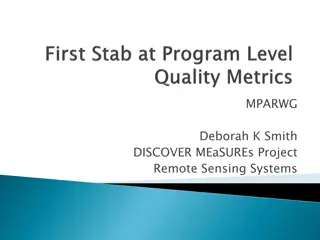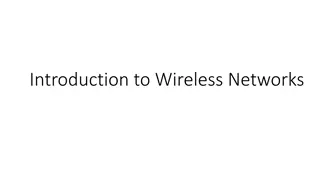Cloud Sensing Model for Coexistence of Wi-Fi and Cellular Networks
This research explores a cloud sensing model enabling coexistence of Wi-Fi and cellular wireless networks. It discusses a proposed model, system architecture, frame structure, and the role of machine learning in spectrum sensing. The study emphasizes decentralized structures and the application of machine learning in optimizing network parameters for maximizing throughput and protecting high-priority users.
Download Presentation

Please find below an Image/Link to download the presentation.
The content on the website is provided AS IS for your information and personal use only. It may not be sold, licensed, or shared on other websites without obtaining consent from the author.If you encounter any issues during the download, it is possible that the publisher has removed the file from their server.
You are allowed to download the files provided on this website for personal or commercial use, subject to the condition that they are used lawfully. All files are the property of their respective owners.
The content on the website is provided AS IS for your information and personal use only. It may not be sold, licensed, or shared on other websites without obtaining consent from the author.
E N D
Presentation Transcript
Cloud Sensing Model for Coexistence of Wi Cloud Sensing Model for Coexistence of Wi- -Fi Fi and Cellular Wireless Networks and Cellular Wireless Networks Saeedeh Parsaeefard Roghayeh Joda Hossein Safi
System Model (Cloud Sensing) Regional coverage for Low-priority users (LPUs) is provided by a C-RAN structure. By employing spectrum sensing, Wi-Fi and C-RAN are be enabled to share idle or temporary underutilized cellular spectrum bands. LPUs have to manage their transmit powers both to mitigate interference with high priority users (HPUs) and attain high throughput. Cooperative spectrum sensing will be facilitated by using C-RAN architecture (BBU center) and their interaction with WiFi brokers 3
System Model (Cloud Sensing) Cont. RRHs are connected to a set of BBUs B = {1; ; B} Spectrum band is cooperatively sensed by Wi-Fi nodes to find idle channels. The spectrum band of HPUs is divided into a set of sub-carriers K = {1; ; K} 4
Frame Structure (Cloud Sensing) Transmission time is divided into slots with a fixed length T In each transmission time, there exist three phases Sensing phase, Reporting and decision phase, Transmission phase. Duration of sensing phase for each sub-carrier and each Node is denoted by ??,? ??,?should be optimized To reach LPUs throughput maximization as well as HPUs protection. In the reporting and decision phase each Wi-Fi node sends its measurement to Wi-Fi broker located in C-RAN 5
Why Machine Learning? Machine learning is required for our setup decentralized and mixed structure of unknown parameters in this network Machine Learning: promising artificial tools due to the The intelligence most Source: www.medium.com
Machine Learning (Review) for Spectrum Sensing Intelligent radio learning paradigm Future smart 5G mobile terminals are expected to o Autonomously access the most meritorious spectral bands o Using the aid of sophisticated spectral efficiency learning and inference o Control the transmission power (while relying ) o Simultaneously adjust the transmission protocols (QoS learning) Jiang, Chunxiao, et al. "Machine learning paradigms for next-generation wireless networks." IEEE Wireless Communications 24.2 (2017): 98-105. 7
High Level View of Machine Learning Approaches The family-tree of machine learning techniques and their potential applications in 5G. Jiang, Chunxiao, et al. "Machine learning paradigms for next-generation wireless networks." IEEE Wireless Communications 24.2 (2017): 98-105. 8
Spectrum Management via Machine Learning How to properly configure the transmission parameters? Wang, Yonghua, et al. "A survey of dynamic spectrum allocation based on reinforcement learning algorithms in cognitive radio networks." Artificial Intelligence Review (2018): 1-14. 9
